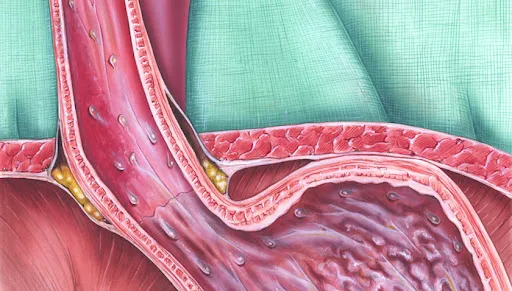As fast as the advent of new diseases is escalating rapidly, health
issues like cancers are becoming increasingly common among people. Likewise,
the prevalence of Gastroesophageal cancer is also gaining swift momentum
throughout the world.
Gastroesophageal
(GE) cancer refers to a combination of gastric & esophageal cancers and is
among the most common tumors globally. Patients with early-stage GE cancer may
have symptoms like dyspepsia, anorexia, difficulty swallowing, weight loss, or
stomach pain, and frequently receive a prescription for a chemotherapy drug
regimen & surgery, either with or without radiation.
The Rapid Rise in
Gastroesophageal Cancer Instances
In recent years,
GE cancer has undergone tremendous change, where most esophageal cancer cases
are discovered at advanced stages. While the prominent causes are yet to be
discovered, frequent drinking & smoking are among the prominent reasons
triggering the occurrence of gastroesophageal cancer, including
gastroesophageal reflux disease, obesity, and gastric ulcers.
With a 5-year
survival rate of under 20%, the prognosis for GE cancer is still poor, despite
significant advancements in multimodality therapy. However, through 2027, it is
anticipated that quick approvals for the first-line combination of systemic
medicines & novel targeted agents would demonstrate an opportunistic future
for gastroesophageal cancer.
Over the years,
numerous therapies have emerged for the treatment of this cancer, yet
chemotherapy has been the most significant for treating this cancer owing to
its higher curability rates & greater efficiency than other treatments.
Chemotherapy is frequently used as an adjuvant treatment for gastroesophageal
cancer in addition to radiation therapy and surgery.
Neoadjuvant and
adjuvant chemotherapy delivery can be done in various ways and there is no best
way. While traditional SOC (standard-of-care) treatments have little effect on
patient outcomes in metastatic or unresectable illnesses, surgery is still
essential for treating esophageal
SCC (squamous cell carcinoma).
Targeted
treatments are also being developed for the treatment of gastroesophageal
cancer in phase III, including Andecaliximab, Avelumab (Bavencio), IMAB362, Ipilimumab
(Yervoy), Napabucasin, Nimotuzumab, Pamiparib, Regorafenib (Stivarga),
Rivoceranib (Apatinib), & Tislelizuma.
Since
gastroesophageal cancer is uncommon with late signs like the sensation of food
being caught in the throat, there is often a low diagnostic rate for it
throughout many nations worldwide. However, medical professionals may now
produce detailed and high-quality images to identify acute lesions thanks to
technological breakthroughs like high-definition & magnification endoscopy
and image enhancement.
An Opportunistic
Future Ahead
Since therapies
like chemotherapy & radiation have been the SOC (Standard-of-Care) for
gastroesophageal cancer regardless of tumor site and stage, more and more
patients are opting for these treatments. Additionally, the growing awareness
among people about the availability of such diseases is also contributing to
the overall expansion of the industry. Moreover, as the patient influx is
increasing rapidly, the governments of different countries are investing substantially
in the industry and conducting various research & development activities to
bring more reliable & effective treatments for the patients. It is
demonstrating a presence of favorable poicies for the clinical trials of new
therapeutics. In addition, the same aspect is further showcasing the active
participation of the leading players, leading the overall industry toward
substantial growth in the future.




0 Comments